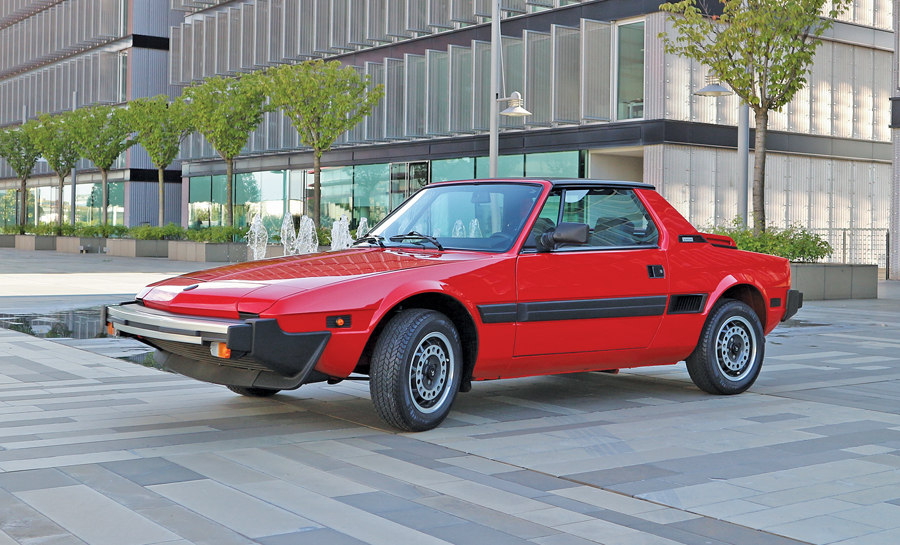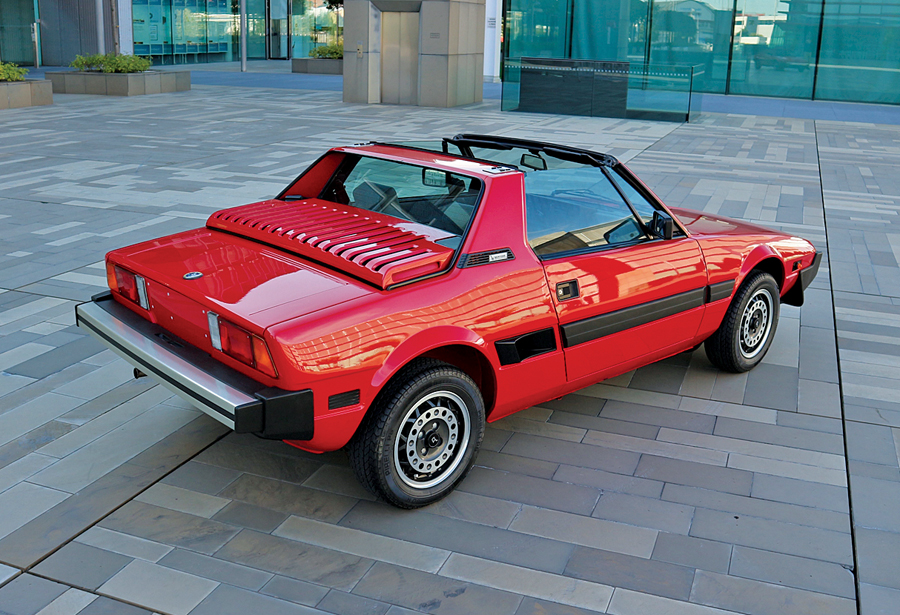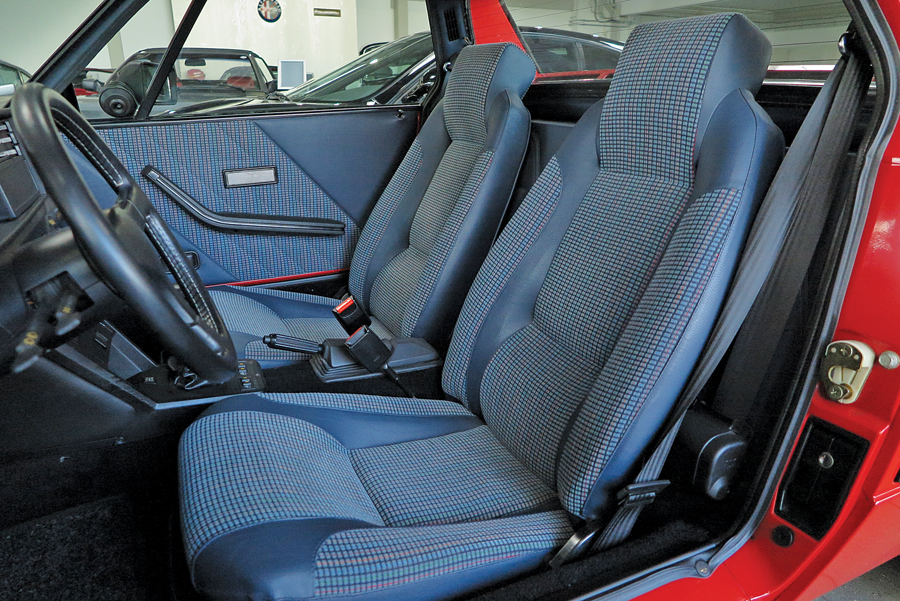Arecent result from the Bonhams Padua auction on October 28, 2017, caused a bit of a stir here at the “Affordable Classic” desk.
Actually, it wasn’t a stir, but more like a big messy spit-take, a coffee-spewing, head-shaking explosion of disbelief.
A late-in-the-run 1988 Bertone X1/9 1500 coupe went out the door for just a skosh more than $30,000.
I’ll wait while you clean up your coffee.
Admittedly, this example of the humble Italian sports car was quite special. It had only 47 kilometers on the clock, but it wasn’t a dusty barn find. Instead it had been maintained all those years despite putting on almost no miles.
It was one of the last built at Bertone (which took over production of the X1/9 from Fiat in 1982) and it had the perfection of a rare “new in box” Dinky Toy, everything but the new-car smell. This car is truly one of a kind, but thirty large is about twice the going rate for the best-of-the-best versions that have sold in the past couple of years.
So should we all be rushing out to buy one? Maybe.
A little — literally — bit of history
The X1/9 replaced the Fiat 850, a cute little two-seater that actually has more collector value than the X1/9 at this point. But as time moved on, so had the shape of cars.
As the X1/9 emerged, it was the Era of the Wedge. The new Fiat was designed at Carrozzeria Bertone by Marcello Gandini. Gandini’s Lamborghini Countach design of the early ’70s led the way toward the great wedgie revolution.
The little X1/9 (when you see one now, it’s just tiny, only about 13 feet end to end) was also the first mass-produced mid-engine sports car, which gained it a car magazine reputation as the “Ferrari for the masses.” After some corporate battles about the mid-engine layout, the front-wheel-drive folks lost.
Putting the 1.3-liter motor from the Fiat 128 Rally into the X1/9 was certainly a technological challenge, but the final layout was a tidy success.
It left a small trunk behind the motor, with the fuel tank and spare tire behind the seats and ahead of the motor. Another, larger luggage area was left in front (which handily accepted the removable Targa top). But two storage areas aren’t the equivalent of a real trunk, and at the end there was only about seven cubic feet available, so pack lightly.
That layout gave the X1/9 a nicely balanced weight distribution of 41/59. The engineers also did as much as possible to keep the weight low in the chassis, even canting the engine slightly.
Coupled with the four-wheel independent McPherson strut suspension, the handling was nimble and flat, and any series of sweeping esses will bring a song to your lips and joy to your heart.
Nimble — but not fast
On the other hand, the original 1.3-liter, 4-cylinder engine was crushing it to produce 60 horsepower, even though it was a short-stroke, rev-happy engine. The 1.5-liter motor came in 1978, along with just a few more horses, a bit more torque, and most importantly, a 5-speed gearbox.
Even though the X1/9 only weighed a holiday meal more than a ton, the acceleration was stately, as even the large motor would only propel the car to 60 mph in 11 seconds, with a quarter-mile time of around 18 seconds. This is faster than a Corvair, sure, but it’s no Corvette, either.
The powertrain would eventually get you north of a hundred miles an hour, and still give you gas mileage in the high 20s — even 30s at highway cruising speeds.
The X1/9 came to the U.S. in 1974, where it was sold through Fiat dealerships. Since it was the age of safer bumpers and emissions controls, by 1975 the cars had both.
The introduction of the 1500 in 1978 included fuel-injection — and modest exterior and interior design changes.
Enter Bertone
In 1982, Fiat stepped aside and Bertone started doing complete construction of the cars, rather than just making the bodies.
The Fiat badge disappeared, and the Bertone X1/9 was ready to sell. Of course, that was the same time Fiat decided to abandon sales in America, rolled up their dealer network of 35 years and left Bertone X1/9 sales to Malcolm Bricklin’s company.
Over the 17-year run of the car, only 160,000 were produced, about 20,000 of those at Bertone.
Wearing the car
You don’t drive an X1/9; you kinda wear it. The front wheelwells intrude into the cockpit, so the pedals are squished to the right, but the seating position is actually pretty comfy, and it avoids the arms-straight-out posture.
The cars are a pure giggle in most instances, with precise handling while avoiding a darty, kart-like feel. The four-wheel discs are quite capable, and even on narrow rubber the car is sticky and sure-footed, tractable at the limit.
Cheap thrills
These cars are cheap. A nice example can be had for $5,000 or less, which is quite a bargain considering the original 1974 car sold here for $3,970 — or $19,800 in today’s dollars. A concours-quality example might take the price to $18,000. Our SCM Pocket Price Guide shows a median price of $4,500. And often the cars that get the median present well.
Beware of rust and repairs
There are pitfalls, of course. First and foremost, they are rust-prone, and more than one ad will admit there is “routine rust” visible.
This is a big problem because replacement body panels are getting rare and expensive. So take a sharp eye to the floorpan, strut mounts, door bottoms, around the Targa top and the rear bulkhead behind the driver. In other words, look for rust everywhere.
The engines are pretty strong, but replacing the valve belt is a job, and the gearboxes like to chew up the odd synchro. And being Italian, the electrics can give any Lucas fan a run for the money in the balkiness and unpredictability department.
Switches can be as dependable as a teenager, which is worth considering if you want to drive after dark, as the mechanism to raise the pop-up headlights is electric (hence the “winking” X1/9 syndrome).
You don’t need $30k
The X1/9 was a strong competitor to MGs and other English sports cars of the time, and it has been unloved for too long. The lucky owner of the highest-priced X1/9 ever may be on to something we can all attain for a lot less cash.
On the other hand, the Padua car “comes with its original pouch containing the service manual, together with the untouched tool kit. A unique opportunity,” said the auction catalog. You’re not going to see that on Craigslist. ♦


